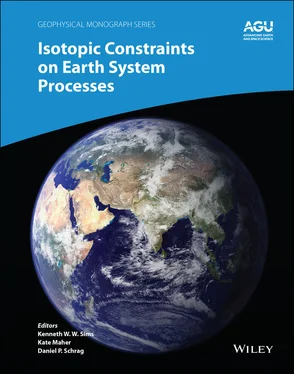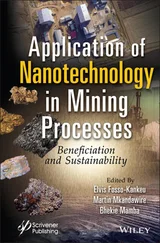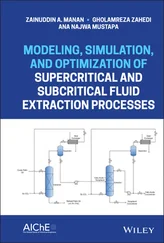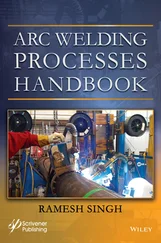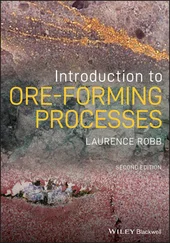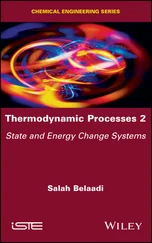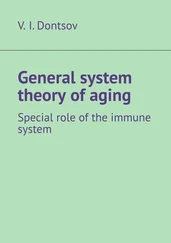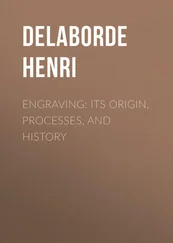Isotopic Constraints on Earth System Processes
Здесь есть возможность читать онлайн «Isotopic Constraints on Earth System Processes» — ознакомительный отрывок электронной книги совершенно бесплатно, а после прочтения отрывка купить полную версию. В некоторых случаях можно слушать аудио, скачать через торрент в формате fb2 и присутствует краткое содержание. Жанр: unrecognised, на английском языке. Описание произведения, (предисловие) а так же отзывы посетителей доступны на портале библиотеки ЛибКат.
- Название:Isotopic Constraints on Earth System Processes
- Автор:
- Жанр:
- Год:неизвестен
- ISBN:нет данных
- Рейтинг книги:4 / 5. Голосов: 1
-
Избранное:Добавить в избранное
- Отзывы:
-
Ваша оценка:
- 80
- 1
- 2
- 3
- 4
- 5
Isotopic Constraints on Earth System Processes: краткое содержание, описание и аннотация
Предлагаем к чтению аннотацию, описание, краткое содержание или предисловие (зависит от того, что написал сам автор книги «Isotopic Constraints on Earth System Processes»). Если вы не нашли необходимую информацию о книге — напишите в комментариях, мы постараемся отыскать её.
Volume highlights include: Isotopic Constraints on Earth System Processes
The American Geophysical Union promotes discovery in Earth and space science for the benefit of humanity. Its publications disseminate scientific knowledge and provide resources for researchers, students, and professionals.
Isotopic Constraints on Earth System Processes — читать онлайн ознакомительный отрывок
Ниже представлен текст книги, разбитый по страницам. Система сохранения места последней прочитанной страницы, позволяет с удобством читать онлайн бесплатно книгу «Isotopic Constraints on Earth System Processes», без необходимости каждый раз заново искать на чём Вы остановились. Поставьте закладку, и сможете в любой момент перейти на страницу, на которой закончили чтение.
Интервал:
Закладка:
Thomas M. JohnsonDepartment of Geology University of Illinois at Urbana‐Champaign Urbana, Illinois, USA
Michelle K. JordanEarth and Environment Department Boston University Boston, Massachusetts, USA and Earth and Planets Laboratory Carnegie Institution for Science Washington, DC, USA
Thomas A. LaaksoDepartment of Earth and Planetary Sciences Harvard University Cambridge, Massachusetts, USA
John C. LassiterDepartment of Geological Sciences Jackson School of Geosciences The University of Texas at Austin Austin, Texas, USA
Kate MaherSchool of Earth, Energy and Environmental Sciences Stanford University Stanford, California, USA
Kathryn A. ManeiroDepartment of Earth and Environmental Science Wheaton College Wheaton, Illinois, USA and Earth and Environment Department Boston University Boston, Massachusetts, USA
Edward W. MarshallDepartment of Geological Sciences Jackson School of Geosciences The University of Texas at Austin Austin, Texas, USA and School of Engineering and Natural Sciences University of Iceland Reykjavik, Iceland
Cole M. MessaWyoming High Precision Isotope Laboratory Department of Geology and Geophysics University of Wyoming Laramie, Wyoming, USA
Frank M. RichterDepartment of the Geophysical Sciences The University of Chicago Chicago, Illinois, USA
Frederick J. RyersonAtmospheric, Earth and Energy Division Lawrence Livermore National Laboratory Livermore, California, USA
Kathrin SchillingDepartment of Environmental Health Sciences Mailman School of Public Health Columbia University New York, USA
Daniel P. SchragDepartment of Earth and Planetary Sciences Harvard University Cambridge, Massachusetts, USA
Sean R. ScottWyoming High Precision Isotope Laboratory Department of Geology and Geophysics University of Wyoming Laramie, Wyoming, USA and Wisconsin State Laboratory of Hygiene University of Wisconsin‐Madison Madison, Wisconsin, USA
Justin I. SimonCenter for Isotope Cosmochemistry and Geochronology Astromaterials Research and Exploration Science Division NASA Johnson Space Center Houston, Texas, USA
Kenneth W. W. SimsWyoming High Precision Isotope Laboratory Department of Geology and Geophysics University of Wyoming Laramie, Wyoming, USA
Alexandra V. TurchynDepartment of Earth Sciences University of Cambridge Cambridge, UK
Daniel Villanueva‐LascurainDepartment of Geological Sciences Jackson School of Geosciences The University of Texas at Austin Austin, Texas, USA
Xiangli WangKey Laboratory of Cenozoic Geology and Environment Institute of Geology and Geophysics Chinese Academy of Sciences Beijing, China
Naomi L. WassermanNuclear and Chemical Sciences Division Physical and Life Sciences Directorate Lawrence Livermore National Laboratory Livermore, California, USA
James M. WatkinsDepartment of Earth Sciences University of Oregon Eugene, Oregon, USA
PREFACE
The exploration of geologic processes using small and often barely measurable variations in the abundance of certain isotopes has been central to unraveling the dynamic processes and interconnected systems that shape our planet. Through careful measurements and a quantitative interpretation of isotopic abundances and their natural variations in Earth materials, isotope geochemists have established the absolute age of the Earth; the timescales of differentiation and remixing that have formed our chemically and mechanically segregated planet; the ages of the continents; the rates of orogenesis and weathering; the evolution of our planet’s climate; the rates of mass transfer between key reservoirs; and even a better understanding of the nexus between geology and life.
These insights into the origins and workings of our Earth are truly profound; even still, the potential of using isotopes to further elucidate our understanding of Earth (and life) science continues to grow. A few decades ago, only a handful of isotope systems were routinely analyzed. Today, recent advancements in mass spectrometry have enabled us to measure the isotopic abundances of almost every element in the periodic table precisely and accurately. Predictably, the application of newly available isotope systems is leading to new ideas, new models, new experiments, and a deeper understanding of Earth system science.
In this volume, we have compiled a collection of papers, written by former students, post‐docs, collaborators, and friends of Donald J. DePaolo. These papers’ topics range from large‐scale, geologic processes to small‐scale, metabolic processes, and are broadly grouped into two simple categories: High‐Temperature/Deep Earth Processes and Low‐Temperature/Shallow Earth Processes . There are other possible ways to organize these contributions – radiogenic versus stable isotope systems; geologic past versus modern; land versus ocean; and many more. However, given the breadth of Don’s contributions over his illustrious career, these divisions are illusory. Don’s early work on mantle heterogeneity contributed to his later work on strontium isotopes in seawater. His work on measuring the timescales of metamorphic processes contributed to his work on using isotopes in hydrology.
Across the diverse contributions in this book, we hope you will see a series of common themes: careful measurements, the use of simple physical models of processes, and an appreciation for how different components of the Earth system interact.
In the following paragraphs, we briefly overview each of this monograph’s chapters and explain how each studies’ research ultimately relates back to the authors’ academic collaborations with Don.
PART I: HIGH‐TEMPERATURE/DEEP EARTH PROCESSES
A collaboration between Frank Richter – an author in this compilation – and Don DePaolo documented in a 2003 paper that diffusion in a silicate melt can produce measurable isotopic fractionations (Richter et al., 2003). This paper opened the door for a large number of subsequent studies and applications of kinetic isotope fractionation in silicate systems, both by mass transport in a melt or mineral (i.e. diffusion) or between phases (i.e. evaporation). In Chapter One , Frank Richter presents an overview of many of these papers.
In Chapter Two , Watkins et al. report previously unpublished results from Watkins’ PhD thesis with Don DePaolo and Rick Ryerson. In the years between 2005–2014, Watkins et al. published several papers on diffusive isotope effects in silicate melts of natural and simplified synthetic compositions. Their efforts advanced the theory of isotope diffusion and provided a general framework for predicting and interpreting stable isotope variability in igneous and metamorphic rocks. The results and novel analysis presented in this chapter expand the range of elements and compositions analyzed and offer new ideas for where to expect large diffusive isotope effects in nature.
For more than two decades, Don and a team of students, post‐docs, and collaborators have led the use of calcium isotope measurements for studying a diverse range of scientific problems, from biological to the earliest formed solids in our solar system. As a pioneer in the use of middle‐mass stable isotope systems, Don helped establish modern theoretical fractionation models for chemical reaction and diffusive transport, robust analytical techniques, and the isotopic compositions of common geological and planetary materials (Simon & DePaolo, 2010). Chapter Three reports Ca isotope measurements of several important mantle‐derived magmas to explore trace element and radiogenic isotope evidence for the presence of recycled sedimentary materials. Importantly, these data show no Ca isotopic signature of subduction in lavas from the Central American volcanic arc or in fresh carbonatite lavas from Oldoinyo Lengai Volcano, Tanzania, thereby demonstrating that sediment subduction is not a simple bulk mixing process.
Читать дальшеИнтервал:
Закладка:
Похожие книги на «Isotopic Constraints on Earth System Processes»
Представляем Вашему вниманию похожие книги на «Isotopic Constraints on Earth System Processes» списком для выбора. Мы отобрали схожую по названию и смыслу литературу в надежде предоставить читателям больше вариантов отыскать новые, интересные, ещё непрочитанные произведения.
Обсуждение, отзывы о книге «Isotopic Constraints on Earth System Processes» и просто собственные мнения читателей. Оставьте ваши комментарии, напишите, что Вы думаете о произведении, его смысле или главных героях. Укажите что конкретно понравилось, а что нет, и почему Вы так считаете.
